Let’s make your next presentation one to remember.
12 Presentation Books Used By A Pitching Expert
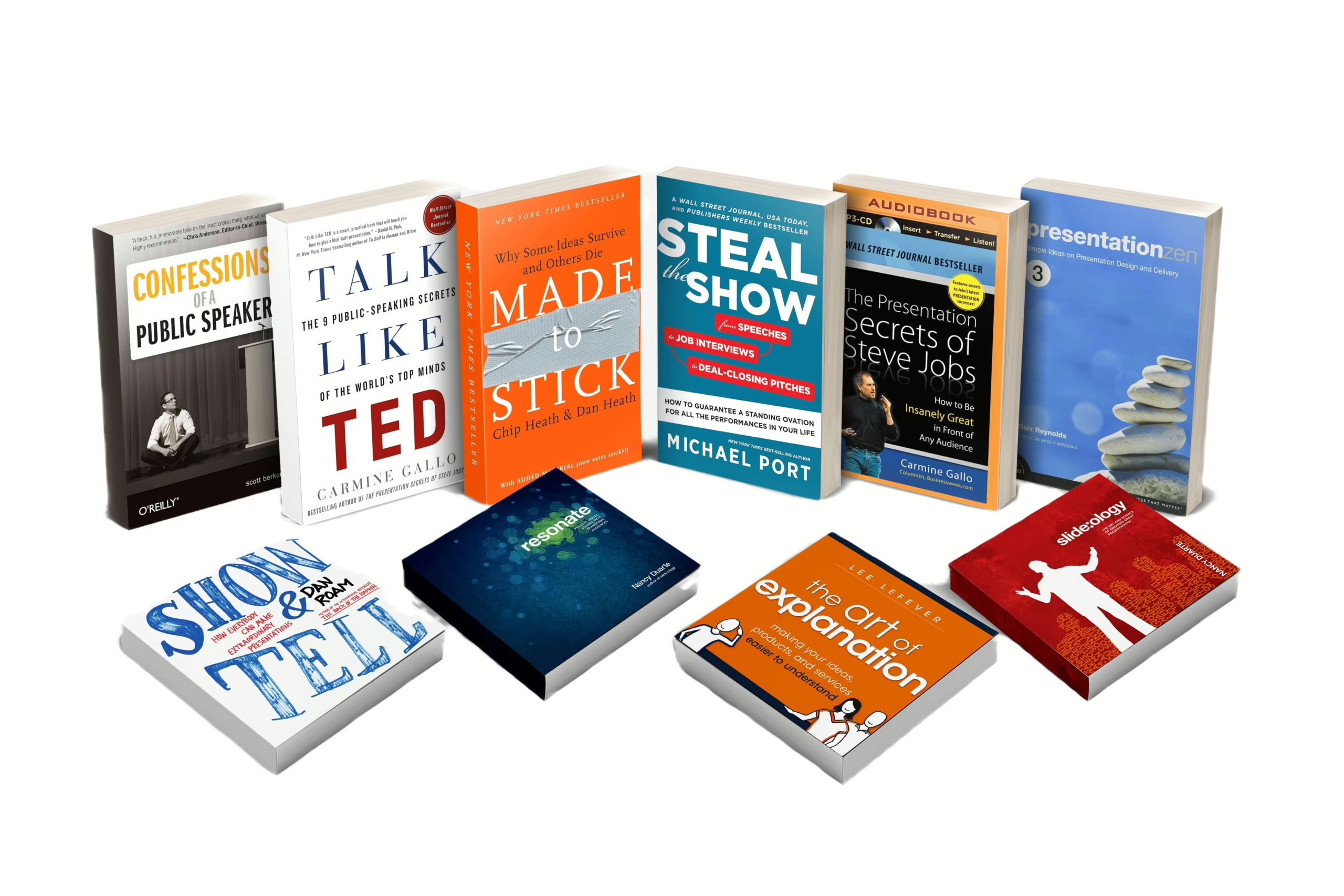

Author: Viktor
Pitch Deck Expert. Ex Advertising. Founder of Viktori. $500mill In Funding. Bald Since 2010.
Mastering the art of presentations is like wielding a superpower.
It’s the difference between inspiring action and watching your audience zone out while checking their emails.
No pressure, right?
But here’s the thing: delivering a great presentation isn’t rocket science—it’s storytelling, strategy, and just a touch of showmanship.
The best presenters have cracked the code, crafting techniques that make their messages stick, their ideas shine, and their audiences actually care.
Spoiler alert: they’ve written books about it, so you don’t have to reinvent the wheel.
Hey there, I’m Viktor, a pitch deck expert, creative strategist and burger lover. I’ve been helping clients raise millions and win pitches for the past 13 years.
And now, I’m sharing 10 game-changing books that will level up your presentation skills faster than a double shot of espresso before a morning meeting.
“Slide:ology: The Art and Science of Creating Great Presentations” by Nancy Duarte
Nancy Duarte’s book is a comprehensive guide that aims to revolutionize the way people create and deliver presentations.
The book highlights the importance of visual communication and teaches readers how to design slides that effectively convey their message. Duarte provides a step-by-step approach to crafting visually engaging and impactful presentations, with a strong focus on audience needs and preferences.
Drawing from her extensive experience working with some of the world’s top brands, Duarte shares practical tips and techniques for creating visually stunning slides that leave a lasting impression on the audience.
The book covers various aspects of presentation design, including color theory, typography, layout, and storytelling. “Slide:ology” also emphasizes the significance of simplicity and clarity in slide design, guiding readers to eliminate clutter and focus on the essential elements of their message.
By applying the principles and strategies outlined in this book, you can transform your presentations into powerful tools for communication and persuasion.
Nancy Duarte covers several key concepts and techniques that can help readers create effective and visually engaging presentations. Some of these key concepts and techniques include:
- Audience-centric approach: Understanding the needs, preferences, and expectations of the audience is crucial in crafting a presentation that resonates with them.
- Storytelling: Integrating storytelling into presentations makes them more memorable and compelling.
- Simplicity and clarity: Effective slide design requires simplicity and clarity.
- Visual communication: Slide:ology emphasizes the importance of using visuals to support the message, as images and graphics are often more effective than text alone.
- Color theory: The book covers the basics of color theory, explaining how different colors can evoke specific emotions and reactions in the audience.
- Typography and layout: Typography and layout play a significant role in making slides readable and visually appealing.
- Data visualization: Presenting complex data in a clear and concise manner is a critical skill in effective presentations.
- Slide preparation and organization: The book offers strategies for organizing slides and building a coherent flow throughout the presentation.
900+ Pros like yourself read the book
“Resonate: Present Visual Stories That Transform Audiences” by Nancy Duarte
Another one by Nancy Duarte and for a good reason (I always thought I could’ve been her prodigal son) The book she wrote offers a comprehensive guide to creating impactful presentations. Duarte emphasizes the importance of telling a compelling story to engage and persuade an audience, and presents a framework for doing so.
It builds on the concepts introduced in Slide:ology. While Slide:ology focuses on creating effective visual presentations, Resonate takes a more comprehensive approach by emphasizing the importance of storytelling and emotional connection.
The book outlines the five stages of a persuasive presentation, beginning with understanding the audience and their needs, and culminating in a call to action. Along the way, Duarte emphasizes the importance of creating a strong emotional connection with the audience and structuring the presentation to build tension and excitement.
Duarte also offers practical advice on designing effective visual aids, such as slides, diagrams, and charts. She emphasizes the importance of keeping visuals simple and uncluttered, and using them to support and reinforce the key points of the presentation.
Overall, Resonate is a valuable resource for anyone looking to create persuasive and engaging presentations that connect with audiences on a deeper level.
Nancy Duarte emphasizes strategies to create impactful presentations by blending storytelling, visual elements, and an audience-first mindset. The book highlights:
- Audience-Centric Approach: Deep understanding of audience needs, preferences, and challenges. Empathy-driven messaging to establish a connection.
- Storytelling as a Framework: Employing the structure of a hero’s journey to narrate a compelling story. Positioning the audience as the hero and the presenter as a guide.
- Contrasts to Create Tension: Alternating between the “what is” (current state) and “what could be” (ideal state). Using this juxtaposition to build anticipation and engagement.
- Visual Storytelling: Integration of visuals that complement and reinforce the narrative. Avoiding overcrowding slides with text, focusing on imagery instead.
- Call to Action: Ending presentations with clear, actionable next steps for the audience.
- Clarity Through Design: Simplified slide layouts to avoid cognitive overload. Consistent use of fonts, colors, and whitespace for readability.
- Emotional Resonance: Incorporating emotional appeals through storytelling, tone, and visuals. Ensuring the message resonates deeply with the audience’s values and aspirations.
- Dynamic Delivery: The importance of vocal modulation, body language, and eye contact. Practicing to achieve a natural and engaging delivery.
1035+ Pros like yourself read the book
Presentation Zen: Simple Ideas on Presentation Design and Delivery” by Garr Reynolds
Garr’s book is a guide to creating compelling and effective presentations (as are all of the books here!). The book emphasizes the importance of simplicity and clarity in both the design and delivery of presentations.
Reynolds argues that too many presentations rely on cluttered slides, bullet points, and irrelevant details. Instead, he encourages presenters to focus on a simple message and use visuals to support that message. He also stresses the importance of rehearsing and delivering presentations in a natural and engaging manner.
Throughout the book, Reynolds offers practical advice on design principles such as layout, color, and typography, as well as tips for using technology effectively to enhance presentations.
You’ll notice that both Nancy and Garr talk about similar points – that’s because they’re really important in presentation design and delivery.
Garr Reynolds, in “Presentation Zen: Simple Ideas on Presentation Design and Delivery”, introduces fundamental concepts and techniques to transform presentations into impactful and memorable experiences. These include:
- Audience-Centric Approach: Prioritizing the audience’s perspective to ensure the presentation resonates with their interests and needs. Building a connection through empathy and relatability.
- Simplicity: Emphasizing the value of clean, uncluttered slides to reduce cognitive load. Encouraging presenters to remove unnecessary elements and focus on the core message.
- Visual Communication: Utilizing images, charts, and graphics to tell a story visually, often more effectively than words. Avoiding over-reliance on text by letting visuals do the heavy lifting.
- Storytelling: Weaving a compelling narrative to engage the audience emotionally and intellectually. Structuring presentations like a story, with a clear beginning, middle, and end.
- Design Principles: Applying key design principles like contrast, alignment, repetition, and proximity to create visually appealing slides. Ensuring that slides are both functional and aesthetically pleasing.
- Use of White Space: Leveraging white space to improve focus and reduce visual clutter. Allowing key elements to stand out and guide the viewer’s attention.
- Data Visualization: Presenting data in a clear, concise, and engaging manner. Simplifying complex information with well-designed charts and graphs.
- Delivery and Presence: Focusing on the presenter’s connection with the audience through natural and engaging delivery. Encouraging mindfulness and being “present” during the presentation to adapt to the audience’s reactions.
278+ Pros like yourself read the book
This book with an insanely long name by Carmine Gallo is a guide to improving presentation skills through the example of Steve Jobs, the legendary you know who.
Gallo identifies seven key principles that Jobs used to create engaging and memorable presentations. These principles include simplifying the message, creating a clear and compelling storyline, and using visuals to enhance the message.
The book also offers practical advice on how to apply these principles to one’s own presentations, including tips on using technology, preparing for presentations, and delivering speeches with confidence and enthusiasm.
Throughout the book, Gallo uses examples from Jobs’ presentations to illustrate his points, and includes interviews with other successful presenters who have used these principles to achieve success.
Remember the iPod speech? Well, you could potentially make the same impact if you apply the principles of this book.
Carmine Gallo outlines several transformative techniques in “The Presentation Secrets of Steve Jobs: How to Be Insanely Great in Front of Any Audience”. These concepts aim to help readers create presentations that captivate, inspire, and leave a lasting impression.
- Audience-Centric Approach: Focus on delivering value to the audience by addressing their needs and expectations. Ensure your presentation answers the audience’s question: “What’s in it for me?”
- Storytelling: Craft a compelling narrative to emotionally connect with the audience. Structure presentations like a three-act play: setting the stage, introducing the conflict, and delivering the resolution.
- The Rule of Three: Present ideas in groups of three to enhance comprehension and memorability. Jobs frequently used three points to structure his presentations, making them simple yet impactful.
- Creating Visual Simplicity: Avoid cluttered slides by emphasizing minimal text and powerful visuals. Use images, graphics, and bold visuals to complement the narrative rather than distract from it.
- Big Picture Focus: Clearly articulate the main idea or “one big thing” the audience should take away. Reinforce this key message throughout the presentation to ensure retention.
- Dramatic Openings: Start with a bold statement, surprising fact, or compelling story to grab attention instantly. Jobs often began with a striking image or headline to set the tone.
- Passion and Enthusiasm: Convey genuine enthusiasm for the topic to inspire the audience. Jobs’ passion for Apple products was contagious, fueling audience engagement.
- Rehearsal and Mastery: Practice extensively to achieve a polished, seamless delivery. Jobs rehearsed each presentation meticulously, ensuring confidence and precision.
918+ Pros like yourself read the book
Another great book by Carmine Gallo. This is a guide to improving public speaking skills by analyzing the techniques used by some of the most successful TED speakers.
Gallo identifies nine key principles that successful TED speakers use to create compelling and memorable presentations. These principles include storytelling, using humor, and focusing on a clear and compelling message.
The book provides practical advice on how to apply these principles to one’s own presentations, including tips on using body language, using multimedia effectively, and engaging with the audience.
Throughout the book, Gallo uses examples from successful TED talks to illustrate his points, and includes interviews with successful TED speakers to provide additional insights and inspiration.
Overall, Talk Like TED is a valuable resource for anyone looking to improve their public speaking skills and create more engaging and memorable presentations. By focusing on the techniques used by successful TED speakers, Gallo provides a roadmap for creating truly inspiring speeches.
Carmine Gallo’s “Talk Like TED: The 9 Public-Speaking Secrets of the World’s Top Minds” outlines essential principles that help speakers deliver captivating and impactful presentations. Some of these key concepts and techniques include:
- Emotional Connection: Establish a deep connection with the audience by sharing personal stories and expressing genuine passion. Emotionally engaged audiences are more likely to remember and act on your message.
- Mastering the Art of Storytelling: Incorporate compelling narratives to make your presentation memorable and relatable. Use stories as a tool to inspire, educate, and emotionally connect with the audience.
- Passion and Energy: Speak on topics you are genuinely passionate about, as enthusiasm is contagious and engages the audience. Channel your energy to inspire and motivate listeners.
- Simplicity and Clarity: Focus on one core idea and communicate it clearly to avoid overwhelming the audience. Simplify complex concepts using relatable examples and analogies.
- Visual Communication: Use impactful visuals, such as high-quality images and simple graphics, to reinforce your message. Avoid cluttered slides and rely on visuals to complement, not compete with, your spoken words.
- Practice and Preparation: Rehearse extensively to refine your delivery, ensuring confidence and polish on stage. Practice helps you internalize the material, making your presentation feel natural and spontaneous.
- Engaging Openings: Start with a powerful hook, such as an intriguing question, surprising fact, or dramatic story, to grab attention. Set the tone for the presentation by immediately engaging the audience.
- Inspiring the Audience: Craft presentations with the goal of inspiring and motivating the audience to take action or think differently. Use your message to encourage change and offer a vision for a better future.
4443+ Pros like yourself read the book
Show and Tell is a guide to improving presentation skills by using a visual approach to communication.
Roam argues that the most successful presentations are those that use visual aids to tell a compelling story. He introduces a framework for creating effective presentations that focuses on three key elements: the message, the audience, and the medium.
The book provides practical advice on how to use visual aids, such as sketches and diagrams, to support the message and engage the audience. Roam also emphasizes the importance of understanding the audience and tailoring the presentation to their needs and interests.
Throughout the book, Roam uses examples from successful presentations to illustrate his points, and includes exercises and templates to help readers apply his ideas to their own presentations.
By focusing on the visual aspect of communication, Roam provides a fresh perspective on how to create truly effective presentations.
Dan Roam’s “Show and Tell: How Everybody Can Make Extraordinary Presentations” introduces essential techniques to help anyone create presentations that are engaging, impactful, and memorable. Key concepts include:
- Audience-Centric Approach: Focus on the audience’s needs and perspective to ensure your presentation resonates deeply. Anticipate questions and address concerns to maintain engagement and relevance.
- Storytelling: Use the power of storytelling to frame your ideas in a relatable, memorable way. Structure presentations with a clear narrative arc: beginning (set the stage), middle (conflict or challenge), and end (resolution).
- Show, Don’t Tell: Emphasize visuals and diagrams to communicate complex ideas simply and effectively. Create visual metaphors and sketches to clarify and reinforce your message.
- The Three Rules of Extraordinary Presentations:
Tell the truth: Authenticity and honesty build trust and credibility with the audience.
Tell it with a story: Frame information in a narrative to make it more engaging and memorable.
Tell it with pictures: Visuals are often more impactful than words, aiding comprehension and retention. - Clarity and Simplicity: Strip away unnecessary details to focus on the core message. Avoid clutter and keep slides simple to direct attention to key points.
- Visual Thinking: Leverage the power of pictures, graphs, and drawings to bring ideas to life. Roam advocates for hand-drawn sketches as a personal and approachable way to convey information.
- Engaging Delivery: Present with enthusiasm and confidence to keep the audience captivated. Use body language, tone, and eye contact to enhance your connection with the audience.
- The “Big Idea”: Clearly define and communicate one central idea that ties the entire presentation together. Reinforce this main idea throughout the presentation to ensure it sticks with the audience.
351+ Pros like yourself read the book
Lee wants to show us through this guide how to improve communication skills by mastering the art of explanation. Abit different than the other books and for a good reason.
LeFever argues that the most successful communicators are those who can explain complex ideas in simple and understandable terms. He introduces a framework for creating effective explanations that focuses on three key elements: clarity, brevity, and context.
The book provides practical advice on how to use analogies, metaphors, and storytelling to help audiences understand even the most complex ideas. LeFever also emphasizes the importance of understanding the audience and tailoring the explanation to their needs and interests.
Throughout the book, LeFever uses examples from successful explanations to illustrate his points, and includes exercises and templates to help readers apply his ideas to their own communication challenges.
By focusing on the art of explanation, Lee provides a practical and actionable guide for making even the most complex ideas understandable to others.
Lee LeFever, in “The Art of Explanation: Making Your Ideas, Products, and Services Easier to Understand”, provides actionable strategies to help individuals clearly communicate complex ideas in a way that resonates with their audience. Some key concepts and techniques include:
- Audience-Centric Approach: Focus on the audience’s knowledge level and tailor explanations to bridge their understanding gap. Begin with what the audience already knows and build toward new ideas logically.
- The Explanation Problem: Identify common pitfalls, such as assuming too much prior knowledge or overloading the audience with information. Address the disconnect between what you know and what the audience needs to understand.
- Storytelling: Use relatable stories to make abstract or complex concepts tangible and engaging. Introduce characters, challenges, and resolutions to simplify and humanize explanations.
- Simplicity and Clarity: Strip away jargon and unnecessary details to focus on the core message. Break complex ideas into smaller, digestible parts for better comprehension.
- Visual Communication: Pair verbal explanations with simple visuals to reinforce the message. Use diagrams, icons, or sketches to clarify abstract concepts and maintain engagement.
- Analogies and Metaphors: Leverage familiar comparisons to make new or complex ideas relatable. Analogies act as bridges between what the audience knows and what they need to learn.
- Empathy and Perspective-Taking: Put yourself in the audience’s shoes to understand their perspective, questions, and potential confusion. Address their pain points or areas of misunderstanding directly in your explanation.
- Three-Part Explanation Formula:
- What: Define what the concept, product, or idea is.
- Why: Explain why it matters or is relevant to the audience.
- How: Describe how it works or solves the audience’s problem.
314+ Pros like yourself read the book
Chip and Dan Heath (or Chip and Dale) explore the elements that make ideas memorable and influential. The authors present six key principles, encapsulated in the acronym SUCCESs:
- Simplicity: Effective ideas are simple, core messages that are easy to understand and remember.
- Unexpectedness: Ideas that surprise or challenge expectations are more likely to grab attention and stick in people’s minds.
- Concreteness: Concrete ideas, with specific examples and tangible details, are more relatable and easier to visualize.
- Credibility: Ideas backed by credible sources, statistics, or testimonials are more persuasive and memorable.
- Emotions: Ideas that evoke emotions, either positive or negative, create a stronger connection with the audience.
- Stories: Telling stories helps to convey ideas in a compelling and engaging way, making them more likely to be remembered and shared.
By applying these principles, individuals and organizations can develop more effective communication strategies and make their ideas stickier.
Chip Heath and Dan Heath, in “Made to Stick: Why Some Ideas Survive and Others Die”, identify critical principles that make ideas memorable, impactful, and shareable. These principles, summarized by the acronym SUCCES, include:
- Simplicity: Strip an idea down to its core essence, ensuring it is both meaningful and easy to grasp. Use concise and powerful statements, like proverbs, to communicate the core message effectively.
- Unexpectedness: Capture attention by breaking patterns and surprising the audience. Create curiosity by presenting a mystery or posing a question that demands resolution.
- Concreteness: Make abstract concepts tangible through specific examples, sensory details, or vivid imagery. Use relatable and real-world references to anchor the idea in reality.
- Credibility: Enhance believability by using credible sources, statistics, or personal testimonials. Leverage the power of authority figures or relatable spokespersons to strengthen trust in the message.
- Emotional Appeal: Connect with the audience’s emotions to make the message resonate deeply. Use storytelling, empathy, and values to evoke feelings that motivate action or change.
- Stories: Embed ideas within compelling narratives to make them engaging and memorable. Stories provide context, relatability, and a call to action that inspires audiences to act or share.
- The Curse of Knowledge: Recognize and overcome the tendency to assume the audience knows what you know. Avoid technical jargon and simplify communication for clarity and accessibility.
- Analogies and Metaphors: Use familiar comparisons to explain complex ideas more effectively. Analogies help audiences relate new concepts to something they already understand.
5042+ Pros like yourself read the book
Scott Berkun offers an honest and entertaining look into the world of professional public speaking. Berkun shares his personal experiences and insights to help readers improve their presentation and communication skills. The book covers a wide range of topics, from overcoming stage fright to engaging audiences effectively.
Berkun emphasizes that practice, preparation, and self-awareness are crucial to becoming a successful public speaker. He advises readers to know their material thoroughly, understand the audience, and create a strong opening to capture attention. To keep audiences engaged, he suggests using humor, storytelling, and varying one’s speaking pace and tone.
The book also covers handling difficult situations, such as dealing with technical issues, unresponsive audiences, or hostile questions. Berkun stresses the importance of staying calm, thinking on one’s feet, and learning from every experience. Ultimately, “Confessions of a Public Speaker” provides valuable tips and candid stories to help anyone become a more confident and effective communicator.
Scott Berkun’s “Confessions of a Public Speaker” provides practical insights and strategies for becoming a confident, engaging, and effective speaker. Some of the key concepts and techniques include:
- Audience-Centric Approach: Understand the audience’s expectations and tailor your message to meet their needs. Engage with the audience by addressing their concerns and making the presentation relevant to them.
- Overcoming Fear: Recognize that stage fright is natural and learn to manage it with preparation and mindset shifts. Use techniques like deep breathing, visualization, and focusing on the message rather than yourself to reduce anxiety.
- Preparation and Practice: Invest significant time in preparing your content and practicing your delivery. Rehearse in front of small audiences or record yourself to identify areas for improvement.
- Storytelling: Use stories to illustrate key points and make your presentation memorable. Share personal anecdotes or real-life examples to connect emotionally with the audience.
- Adaptability: Be prepared for unexpected challenges, such as technical failures or difficult audience members. Learn to think on your feet and adjust your delivery to maintain the audience’s attention.
- Clarity and Simplicity: Present ideas in a clear, straightforward manner to avoid confusing the audience. Use simple language and avoid overwhelming the audience with excessive detail.
- Engaging Delivery: Use humor, anecdotes, and questions to keep the audience engaged and interested. Pay attention to your tone, pacing, and body language to convey confidence and enthusiasm.
- Managing Distractions: Address potential disruptions calmly, whether it’s a noisy venue or a disengaged audience. Stay focused on your message and find ways to redirect attention back to your presentation.
584+ Pros like yourself read the book
Michael Port offers a comprehensive guide to mastering the art of public speaking and persuasive communication in various settings. Port emphasizes the importance of performance in all aspects of life, from delivering speeches to acing job interviews and winning business deals.
The book provides actionable strategies for improving one’s performance skills, such as understanding the audience, crafting compelling stories, and developing a strong stage presence. Port stresses the need to be authentic and genuine, while also being aware of nonverbal communication and vocal dynamics.
“Steal the Show” also covers essential preparation techniques, including extensive research, rehearsal, and mental visualization. Port advises readers to manage their nerves through mindfulness and self-awareness. He also shares tips on handling challenging situations and improvising when things don’t go as planned.
Michael Port’s “Steal the Show: From Speeches to Job Interviews to Deal-Closing Pitches” offers a wealth of practical strategies to help individuals perform at their best in high-stakes communication scenarios. Some of the key concepts and techniques include:
- Audience-Centric Approach: Focus on creating value for the audience by understanding their needs, goals, and challenges. Tailor your delivery to resonate with their expectations and leave a lasting impression.
- Preparation and Practice: Treat every presentation or interaction as a performance that requires preparation. Rehearse extensively to build confidence and ensure seamless execution.
- Storytelling: Use stories to captivate the audience and make your message memorable. Share personal experiences or relatable anecdotes to build emotional connections.
- The Performer’s Mindset: Embrace the role of a performer to command attention and exude confidence. Use techniques such as visualization and positive affirmations to overcome self-doubt and stage fright.
- Dynamic Delivery: Incorporate vocal variety, pacing, and body language to engage and inspire the audience. Maintain eye contact, use gestures effectively, and project energy to keep the audience invested.
- The Importance of Improv: Develop improvisation skills to handle unexpected situations with grace and adaptability. Learn to think on your feet and adjust your approach based on audience reactions.
- Clear Messaging: Focus on delivering a single, clear message that the audience can easily understand and remember. Avoid jargon or overloading the presentation with too much information.
- Building Authenticity and Trust: Be genuine and authentic to build rapport and credibility with your audience. Show vulnerability and confidence in balance to create a relatable yet authoritative presence.
712+ Pros like yourself read the book
Oren Klaff introduces a groundbreaking approach to pitching that is rooted in neuroscience, psychology, and strategic control of social dynamics. Drawing from his extensive experience in investment banking and high-stakes negotiations, Klaff argues that successful pitches are not about overwhelming an audience with data or logic but about controlling the narrative, maintaining authority, and engaging the brain’s primitive decision-making system—what he calls the “croc brain.”
At the heart of the book is the concept of frame control, which dictates that every interaction involves competing frames, and the person with the dominant frame shapes the conversation and ultimately wins the deal. Rather than seeking approval, he teaches readers how to position themselves as the prize, creating intrigue and tension that make the audience work for their attention and buy-in. Through his STRONG method, Klaff provides a structured formula for crafting compelling pitches that grab attention, sustain engagement, and drive action.
Beyond technique, Pitch Anything emphasizes confidence, high-status behavior, and effective delivery, arguing that how you say something is just as important as what you say. By understanding the psychology of persuasion, the impact of scarcity, and the importance of status dynamics, readers can transform the way they present ideas, negotiate deals, and influence decision-makers. The book challenges conventional pitching wisdom and equips professionals with a highly tactical, results-driven approach to commanding attention and winning high-stakes opportunities.
Oren Klaff covers several key concepts and techniques in “Pitch Anything: An Innovative Method for Presenting, Persuading, and Winning the Deal” to help readers craft compelling pitches, capture attention, and persuade effectively. Some of these key concepts and techniques include:
The STRONG Method: Klaff introduces the STRONG framework (Setting the frame, Telling the story, Revealing the intrigue, Offering the prize, Nailing the hookpoint, and Getting the deal) to structure persuasive pitches.
Frame Control: One of the book’s core ideas is controlling the “frame” in a conversation. Whoever controls the frame has the most influence over the discussion and negotiation. Klaff explains how to set and hold dominant frames.
The Power of First Impressions: The initial moments of a pitch set the stage for its success. Capturing attention quickly and establishing authority from the start increases the likelihood of engagement.
Neuroscience of Decision-Making: Klaff explains that decisions are made in the crocodile brain—the primitive part of the brain responsible for quick, instinctual decisions. Pitches should be simple, emotionally engaging, and avoid overwhelming complexity.
Using Stories to Engage: Instead of relying on facts and logic alone, storytelling makes a pitch more engaging and relatable. Stories trigger emotional responses that help persuade and connect with the audience.
Creating Intrigue and Tension: People are more engaged when there is an element of suspense. Introducing an unexpected twist or challenge makes the audience want to know what happens next.
The Prize Frame: Instead of chasing the deal, position yourself or your offering as the prize. This flips the dynamic and makes the audience feel they must qualify for what you are offering, increasing its perceived value.
Power Dynamics in Pitching: Klaff explains how to shift power in negotiations and pitches by controlling status and positioning yourself as the dominant player in the interaction.
3777+ Pros like yourself read the book
Oren Klaff builds upon his expertise in persuasion and high-stakes pitching to introduce a revolutionary approach to influencing decision-makers. Unlike traditional methods that rely on aggressive selling or overwhelming people with data, Klaff argues that the most effective way to persuade is to subtly guide people toward adopting your idea as their own. He challenges the notion of convincing or pushing a message and instead emphasizes the power of narrative, status dynamics, and psychological triggers to create an environment where the audience feels a natural inclination to agree.
At the core of the book is the idea that people resist being sold to, but they readily accept ideas they believe they arrived at themselves. Klaff teaches readers how to structure conversations and presentations so that the listener sees the idea as logical, inevitable, and even their own invention. By shifting the focus away from traditional persuasion tactics and instead designing interactions that allow the other party to feel in control, he provides a playbook for mastering influence in business and negotiations.
Through engaging real-world examples and actionable insights, Flip the Script reveals how professionals can change minds without resistance, secure agreements without pushback, and win deals effortlessly. Whether for sales, pitching, or leadership, Klaff’s method offers a fresh, counterintuitive approach that makes persuasion feel seamless, natural, and incredibly effective.
Oren Klaff covers several key concepts and techniques in “Flip the Script: Getting People to Think Your Idea Is Their Idea” to help readers master the art of persuasion by shifting the way ideas are presented and accepted. Instead of pushing a message or trying to convince others through traditional sales tactics, Klaff introduces a method that makes the audience feel as though they arrived at the decision themselves. Some of these key concepts and techniques include:
Inception-Based Persuasion: Rather than trying to sell an idea directly, the goal is to guide the audience in a way that makes them believe the idea was their own. People naturally resist being convinced but embrace ideas they feel they came up with themselves.
Status Alignment: High-status individuals have more influence. Klaff emphasizes the importance of presenting yourself as an equal or slightly higher-status individual in conversations, ensuring that your audience perceives you as an authority rather than as someone desperate for approval.
The Power of Certainty: People are drawn to those who appear confident and certain. If you communicate with unshakable confidence, others will assume that your idea must be valid and worthy of consideration.
Frame Control: Every interaction involves competing perspectives, or “frames,” and the strongest frame always wins. By establishing control over the conversation early, you dictate the terms of engagement and ensure that your idea takes center stage.
The Flash Roll: This technique involves delivering a rapid, high-level breakdown of your expertise in a way that immediately establishes credibility. Instead of overwhelming with details, the Flash Roll conveys deep knowledge quickly, proving that you are an expert without needing prolonged explanations.
Narrative-Based Persuasion: People respond to stories more than facts and figures. Klaff highlights how structuring your message as a compelling narrative—rather than a sales pitch—engages the audience emotionally and makes your idea more persuasive.
Pre-Wired Ideas: To avoid resistance, successful persuasion involves anchoring your idea to pre-wired mental models—concepts that people already accept as true. By linking your pitch to familiar frameworks, the idea feels natural and easier to embrace.
Creating Micro-Commitments: Instead of asking for a big commitment upfront, Klaff suggests getting small agreements along the way. These micro-commitments make it easier for people to gradually move toward full buy-in without feeling pressured.
747+ Pros like yourself read the book
Alternatively, book a call and get the full pitch deck done. Hands-off.
I do the copy, design, financials, narrative and give you some go-to-market ideas you can implement. 1000s of founders hired me to do the same. During the process, they saved 40 hours on average.
Viktori. Pitching your way to your next funding.
Locations
Office 1: 633 North Wells Street Chicago, IL, United States, 60654
HQ: Boulevard P.O. 10000 Skopje, North Macedonia
Pitch Deck Resources
Case Studies
Client Reviews
Presentation Resources
Pitch Deck Services
Industry Specific Pitch Deck Services:
Additional Services
About Viktori
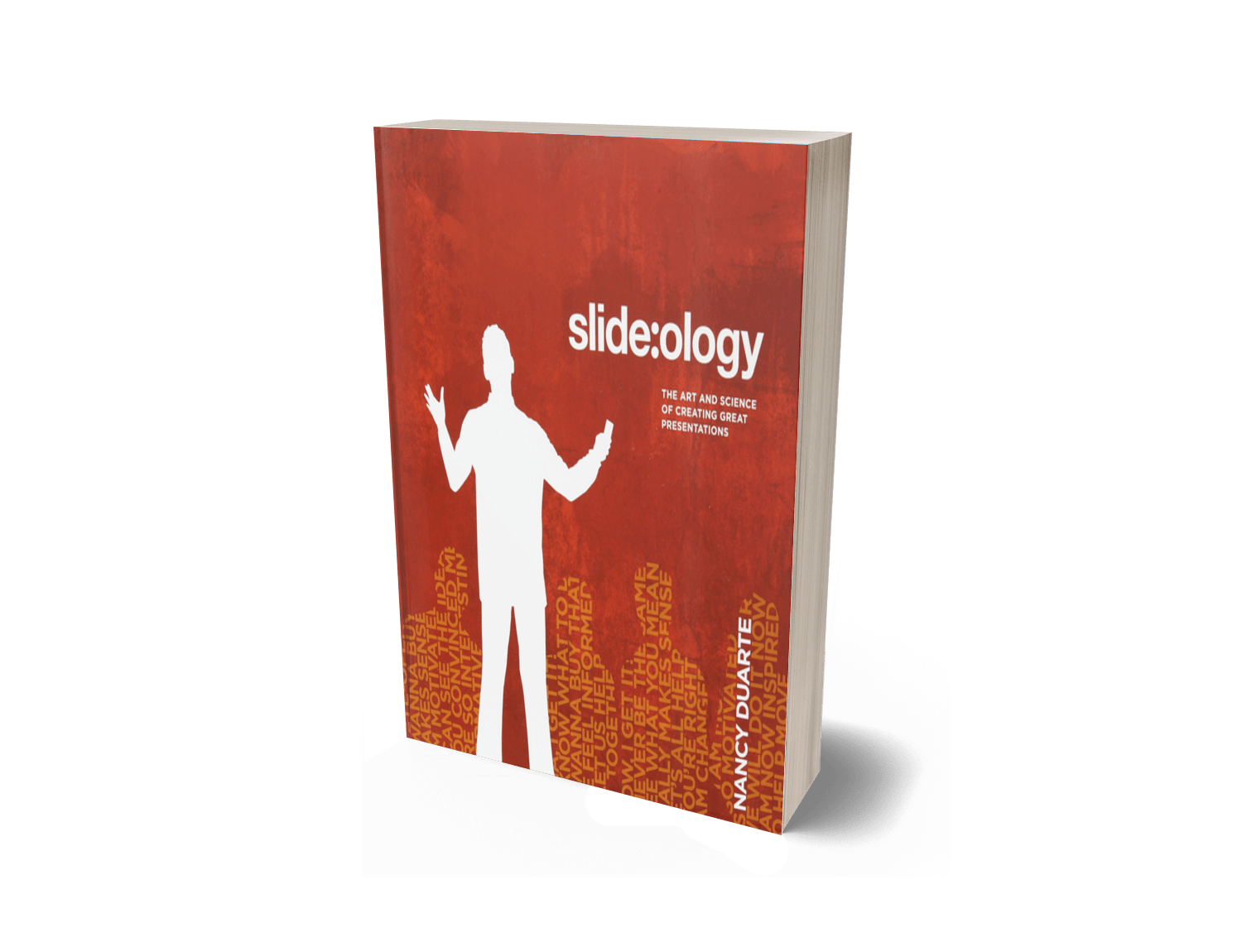
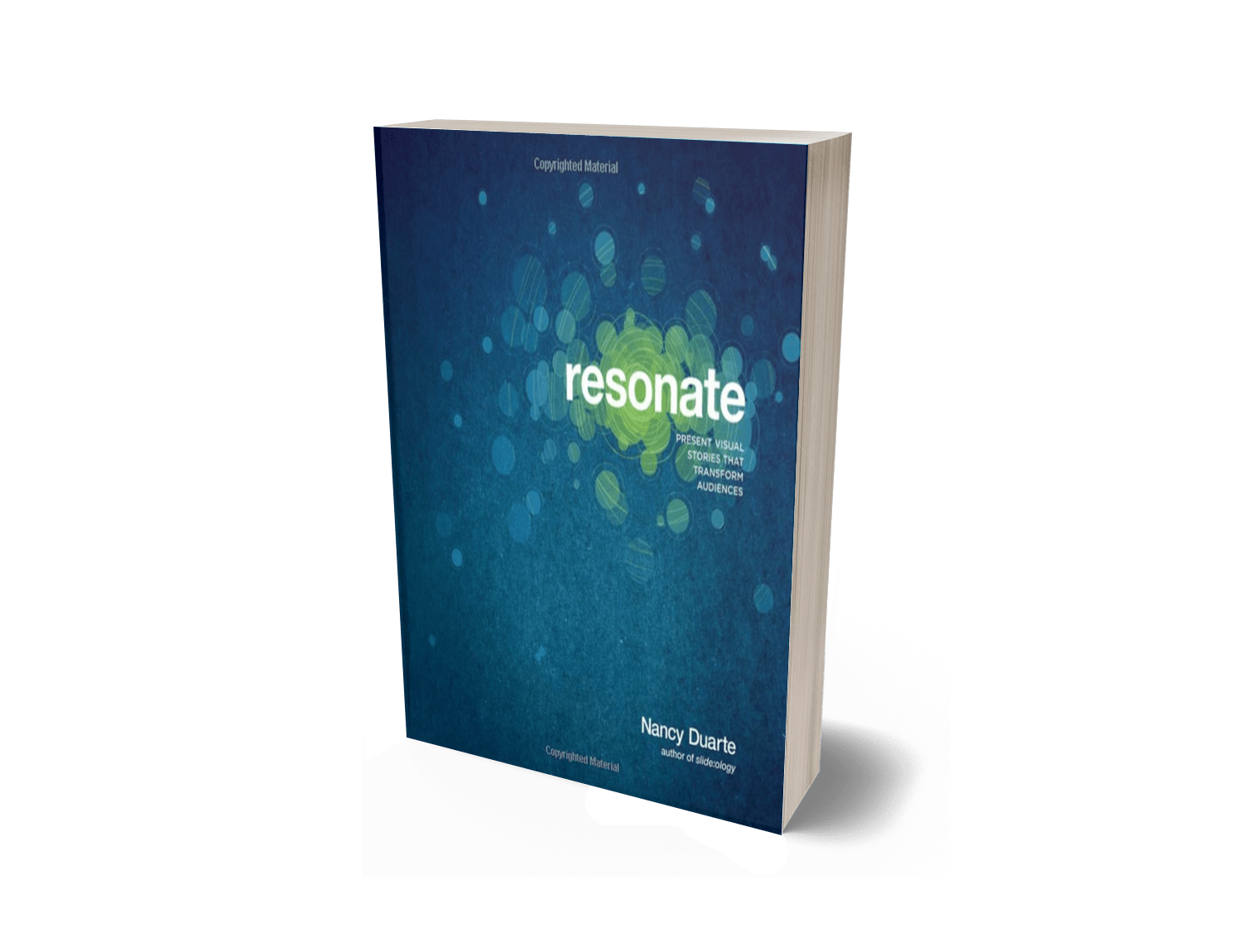
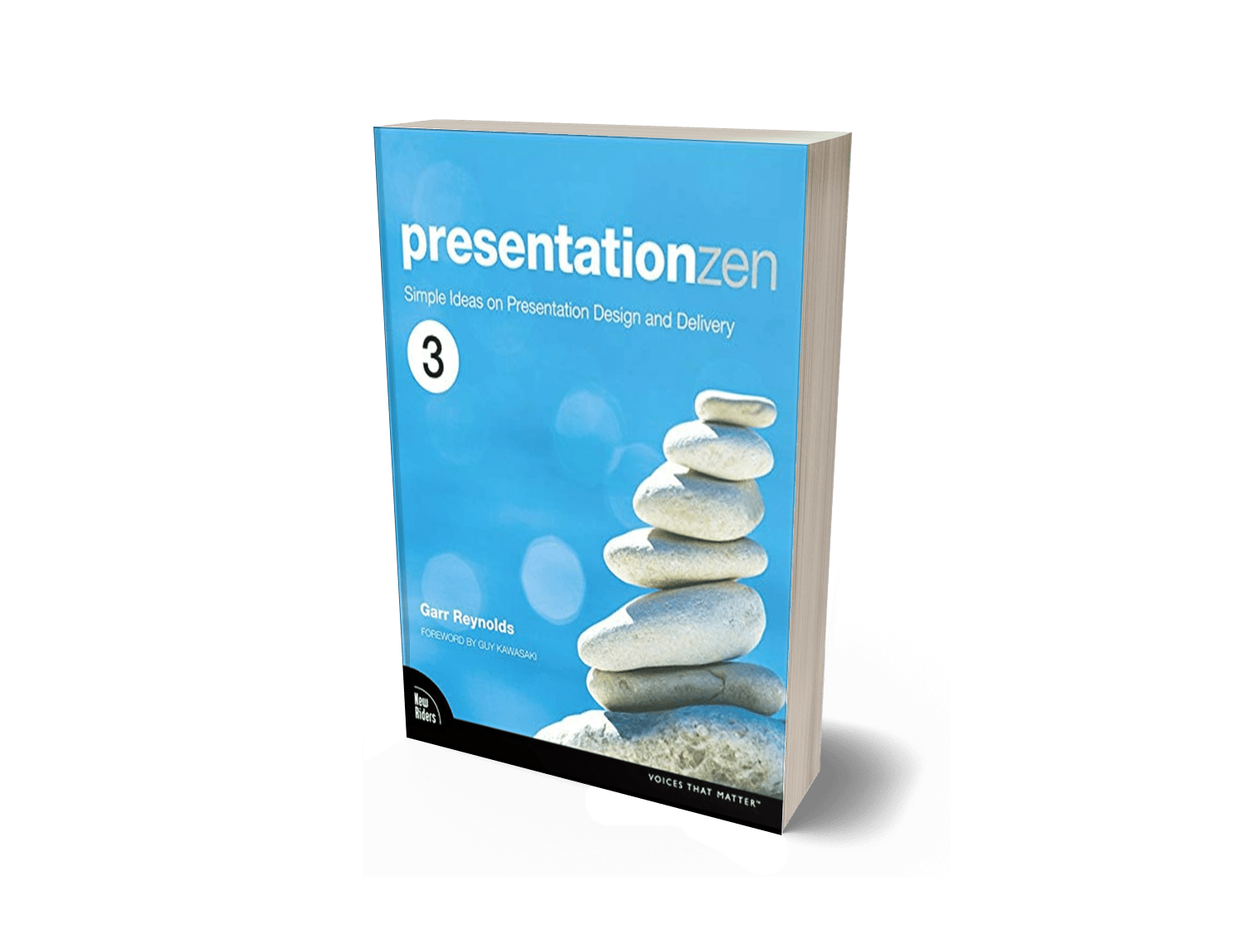






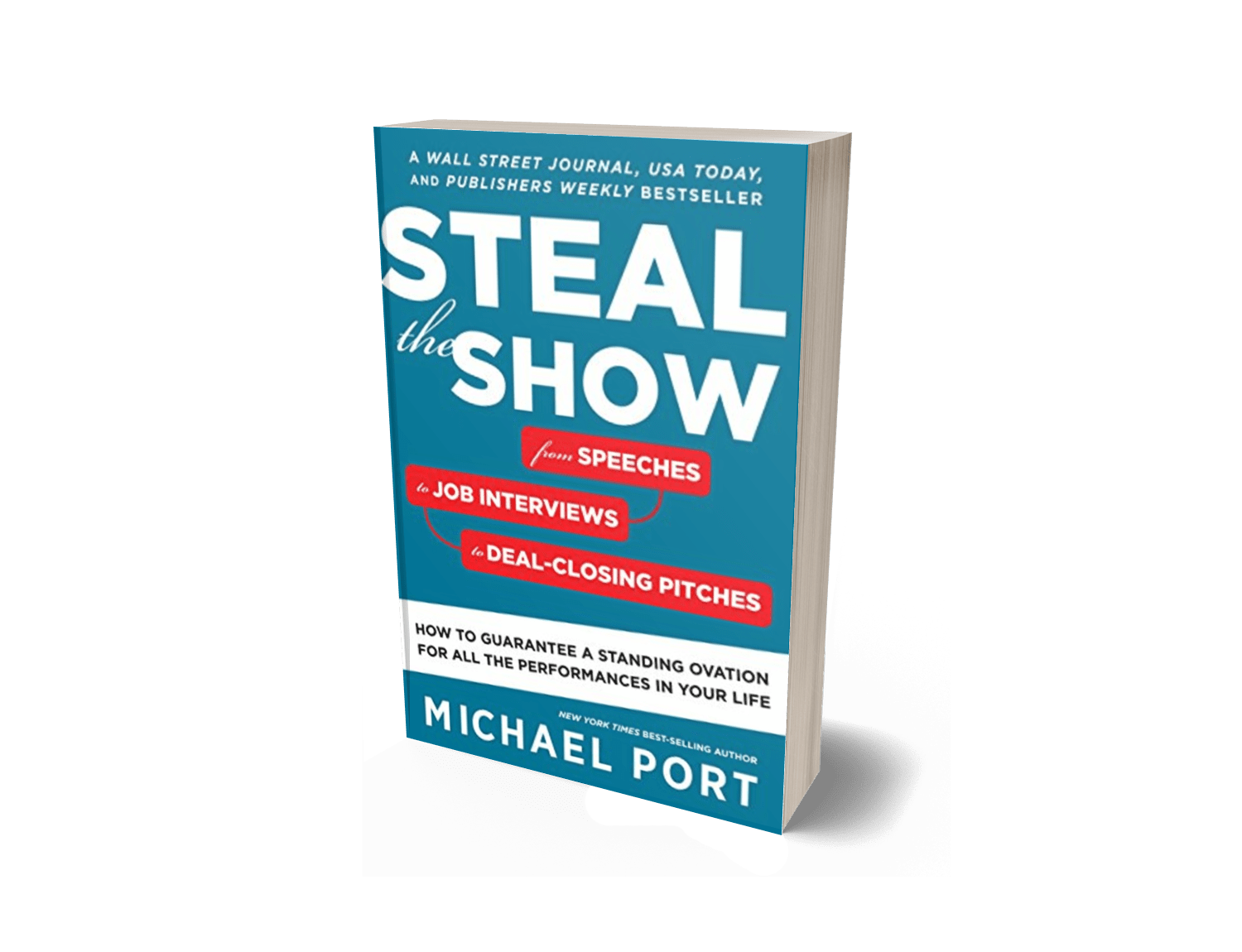



1 thought on “12 Presentation Books Used By A Pitching Expert”
Excellent will explore further